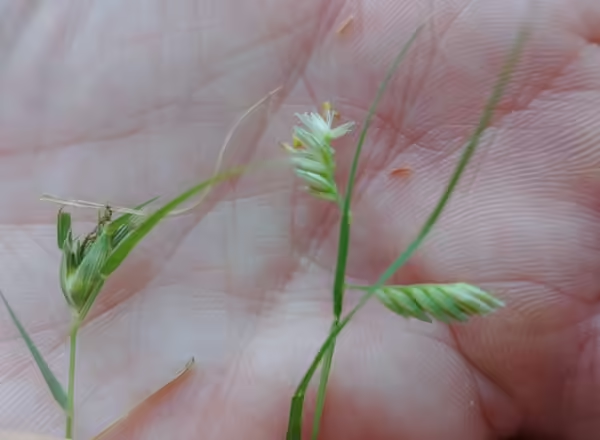This native, warm-season grass is distinct from its grama cousins.
Side Oats Grama is one of four grama grasses found in Illinois, and, by far, the most common. Grama comes from the Latin word grāmen, which means grass. The grama grasses belong to the genus Bouteloua.
Where Side Oats grows
Side Oats Grama, Bouteloua curtipendula, is a native, warm-season grass that can be found in northern Illinois as well as counties in west-central and southern Illinois. You can find it growing in drier prairies sites, as well as glades and barrens.
What Side Oats looks like
How do you identify Side Oats Grama?
- A short, slim grass, typically 2-3 feet tall.
- Along the margins, or edges, of the leaf blades, look for hairs held on small glands. Later in the growing season, you can still see the glands remaining when the hairs have fallen off.
- A short hairy ligule.
The inflorescence of this grass is unique – it will develop a raceme inflorescence with a zig-zag rachis, which is the stem of the inflorescence.
- The spikelets can be found in small clusters held on a stalk.
- The individual spikelets are awned, albeit with very short awns.
- The spikelet clusters resemble short eyelashes.
- The spikelets can be green to red in color, and turn brown in the fall.
- If you are lucky enough to catch this grass in flower, it has bright red anthers that you can see exserted, or pushed out, from the spikelets.
- As the season progresses, the inflorescence often nods to the side, which leads to the name "Side Oats Grama."
Need a refresher on grass identification terms, like ligule and spikelet? Check out this blog post!
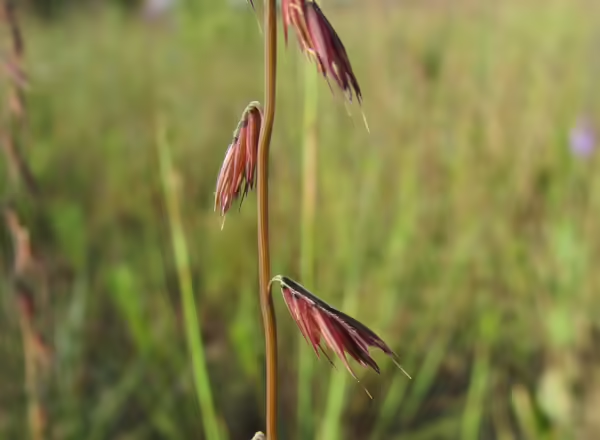
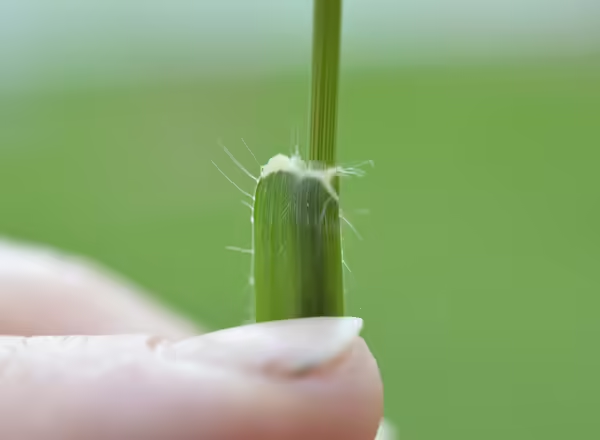
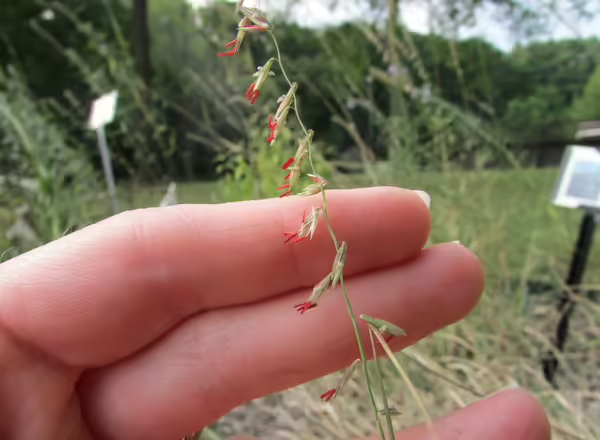
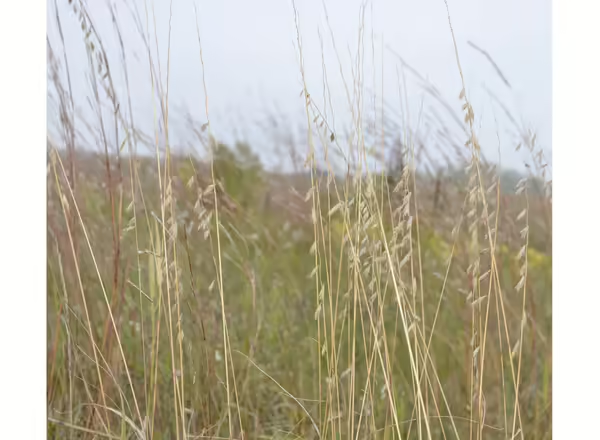
Side Oats Grama, Bouteloua curtipendula, is a native, warm season grass found throughout Illinois. It is a bunchgrass that grows two to three feet tall, and the young leaves have a distinctive trait. Along the edges of the leaf blades look for small glands, each with a single hair on top of them...
Look-alike grasses
There are three other grama grasses in Illinois. In Illinois, you are most likely to see them in the northern counties. Each of these three grasses is much smaller in size and much less common in Illinois than Side Oats Grama. They are typically under 1 foot tall. Besides the size of the grasses, the easiest way to tell them apart is by their inflorescences.
- Blue and Hairy Grama have raceme inflorescences with dense clusters of spikelets about 1-2 inches long (two to three times the size of the clusters of Side Oats Grama) that very much resemble an eyelash.
- Hairy Grama is much hairier than Blue Grama, has shorter racemes, and its clusters of spikelets do not extend across the entire branch, leaving a pointed tip. In contrast, the spikelets of Blue Grama extend across nearly the entire branch of the cluster.
- Buffalo Grass differs because it is dioecious, which means it produces separate male and female flowers, which are found on different plants. The spikelets of the male flowers are held in small clusters on stalk, more closely resembling Side Oats Grama. The female flowers are reduced.


